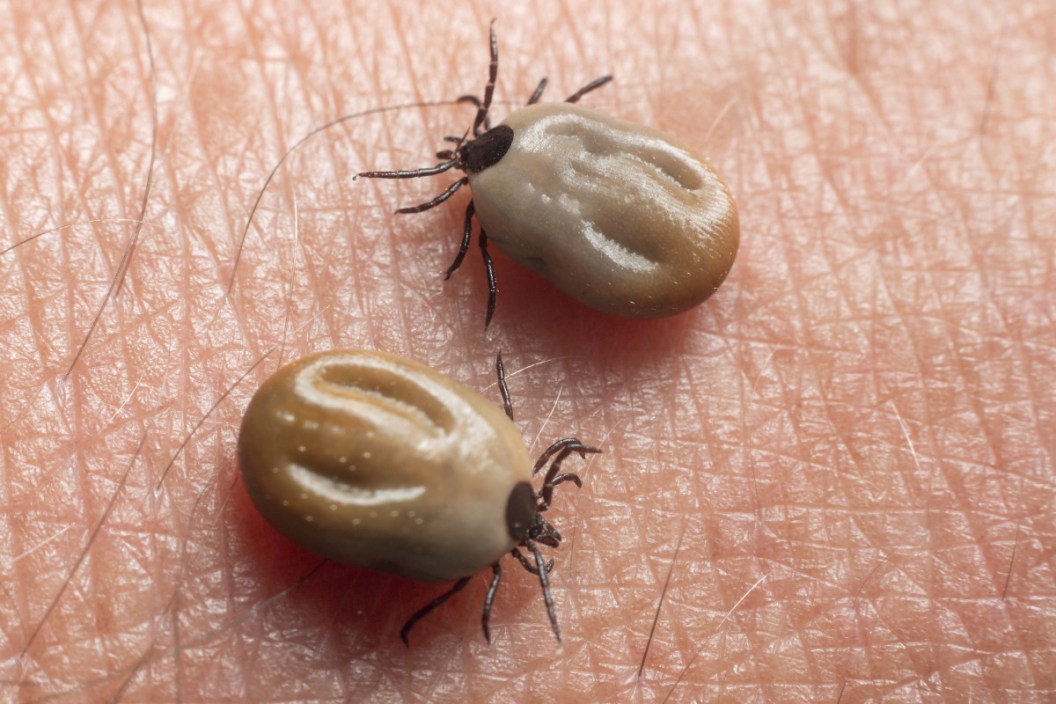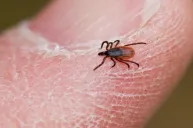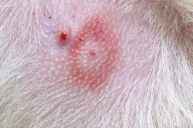Anyone who's spent much time at all in the great outdoors has picked one of these pesky little bugs off their scalp or a canine companion. While just the thought of a tick latching on for a blood feast is enough to make your skin crawl, the long-term effects of tick bites can be even scarier. It turns out tick saliva carries many more infectious diseases and pathogens than most people realize. While some of the symptoms of tick-borne diseases are mild, causing flu-like symptoms or joint pain, others can be downright terrifying. Some are even life-changing or threatening in rare cases. It's good to know all about tick removal, but it's even more important to know about the different diseases they spread before heading into your favorite wooded areas. Hopefully you'll never need to use this information. However, if you suddenly start feeling or seeing symptoms around a bite area, it can better help your health care provider narrow down the seriousness of the bite and get you treatment faster. These are some of the worst things that can happen when a tick bites you. You'll probably find yourself packing extra permethrin and insect repellent after reading about some of these.
Lyme Disease
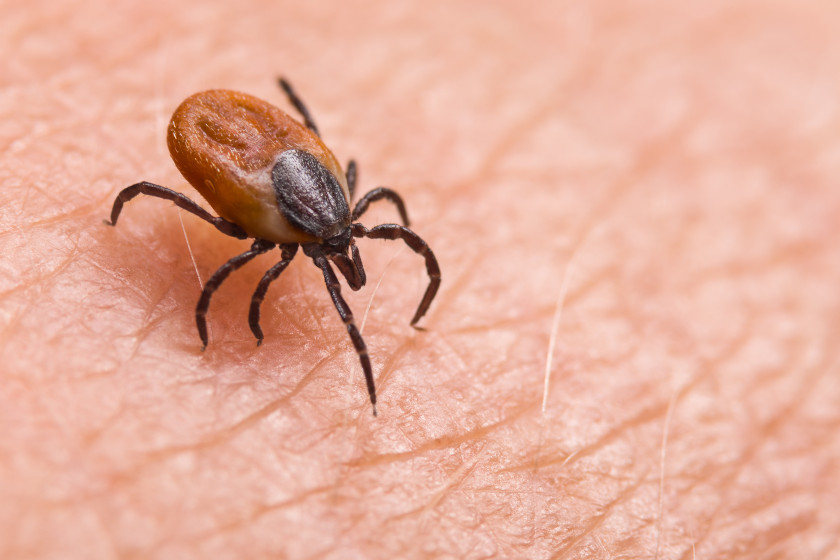
Getty Images: Ladisla Kube
The most well-known tick borne illness, Lyme Disease is a bacterial infection spread by infected deer ticks. Symptoms will initially resemble the early stages of the flu only a few days after the actual bite. These will-include fever, chills, headache, fatigue, swollen lymph nodes, body aches, and a red rash resembling a bulls eye.
Left untreated, the infection can spread to your heart, joints, and nervous system. Serious symptoms include facial palsy, irregular heart beat or heart palpitations, neck stiffness, arthritis, brain and spinal cord inflammation, shortness of breath, dizziness, and pain or numbness in the hands and feet.
With a wide range of symptoms that can mimic other issues, Lyme disease can be tough to pinpoint, especially if you don't get the telltale bulls eye at the onset. It can remain dormant in your body for months, making it even more difficult to diagnose based on symptoms and unreliable lab tests.
Treatment typically includes an aggressive course of antibiotics—the earlier the better. It can take a while for infected patients to fully recover, and post treatment Lyme disease syndrome can affect people well beyond the six-month mark.
I know average people—not even avid outdoorsmen—who are dealing with facial paralysis, chronic pain, and heart health issues several years after a Lyme diagnosis and delayed treatment. If you think you might have Lyme, it's best to consult a doctor right away.
Alpha-Gal Meat Allergy
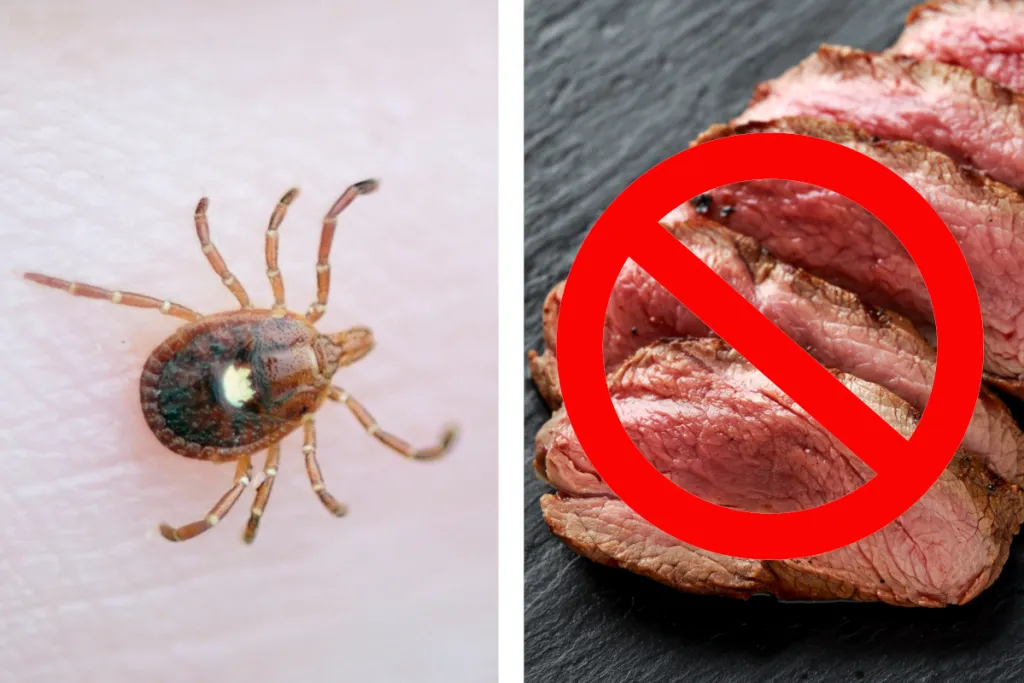
One of the main reasons hunters list for hitting the woods is sourcing their own food. But one serious syndrome triggered by tick bites can tragically result in an inability to eat venison, pork, and other meats.
Dubbed the red meat allergy, Alpha-gal syndrome is still not well understood in the scientific community. We do know it is a dangerous reaction to a sugar molecule found in most mammal meat. Symptoms can include hives, rash, nausea, shortness of breath, dizziness, and swelling of face, throat, and eyelids within a few hours of ingesting certain types of meat, dairy, and animal products.
Doctors have narrowed down the type of tick responsible and now believe this bizarre ailment is a result of Lone Star tick bites. Treatment is mostly just avoiding all the delicious foods that cause reactions and close monitoring by an allergist. Technically you could still hunt, but just imagine not being able to eat the animals you harvest ever again. We shudder just thinking about it.
Rocky Mountain Spotted Fever

Getty Images: jwilkinson
Spread via several species of ticks, Rocky Mountain spotted fever is a bacterial disease that, like Lyme, can manifest in nonspecific symptoms that resemble other illnesses. Most infected patients will have a fever, headache, and some type of rash. Other common symptoms include nausea, vomiting, lack of appetite, and muscle pain.
Treatment usually includes the antibiotic doxycycline, and early detection is critical to preventing permanent damage such as amputation, paralysis, hearing loss, mental disability, or even death.
Colorado Tick Fever
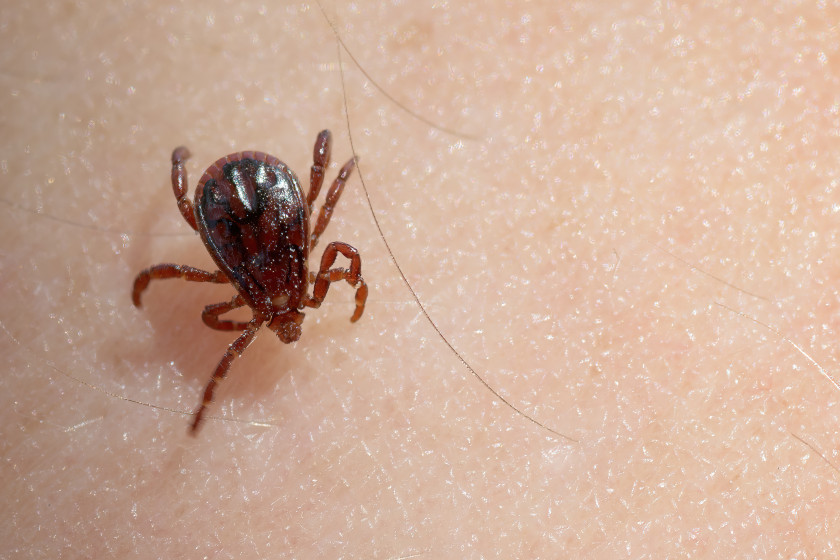
Getty Images: RobertAx
According to the Centers for Disease Control and Prevention, Colorado tick fever is a rare viral disease that humans can contract after an infected Rocky Mountain wood tick bites them. The CDC notes incubation period can range from one day to 14 days, and symptoms commonly include a biphasic fever—which subsides for a few days then flares up again—fatigue, body aches, gastrointestinal issues, and a skin rash.
No medications to treat Colorado tick fever exist, but most cases are relatively mild and clear within a few weeks. In extreme cases, patients are admitted to the hospital to treat symptoms via intravenous fluids and pain medications.
Tularemia

Getty Images: Ladislav Kubes
Tularemia is a disease that affects both humans and animals in a variety of ways, depending on how it's contracted. Bites from infected ticks typically result in glandular or ulceroglandular tularemia, which both include swollen lymph glands and the latter also includes a skin ulcer where the bacteria entered the body. Treatment usually involves a course of antibiotics over several weeks.
Ehrlichiosis

An umbrella term for diseases caused by certain bacteria, ehrlichiosis can be transmitted by infected ticks with symptoms appearing within a week or two. Early symptoms within the first five days include fever, headache, nausea, vomiting, confusion, and sometimes a rash. It can be treated with antibiotics, but if not detected early can lead to more serious problems such as brain or nervous system damage, organ failure, respiratory failure, bleeding, and even death.
Powassan Virus

Experts are warning and spreading the word on a more serious tick-borne disease that may be emerging: the Powassan virus. According to Today.com, the Powassan virus, which is a far rarer and more deadly pathogen than the bacterium that produces Lyme, is also transmitted by the deer tick. The virus can cause inflammation in the brain, which leads to death or permanent disability in 60 percent of cases.
"The bottom line is that we should be very scared of it because nobody is safe from it," Dr. Jennifer Lyons, chief of the division of neurological and inflammatory diseases at the Brigham and Women's Hospital and an assistant professor of neurology at the Harvard Medical School, told Today.com, "And it could be that it is emerging and will explode over the next few years."
Unfortunately, the virus is capable of being transmitted from a tick to a human in as little as 15 minutes. Lyme bacterium, on the other hand, needs 24 hours to be transferred.
The virus has been around since the 1950s. But until now it wasn't making news because it was found in ticks that didn't bite humans. Now that the virus has been found in deer ticks, which regularly bite humans, the concern is significant.
As of now, experts are unsure of how many actual people are infected with the Powassan virus, but that "many, many more" may be, but only showing very mild symptoms. And, there is currently no treatment for the disease, giving experts no indication of how far or fast the virus can spread at this point in time either.
"We're trying to identify the trends that would signal that type of emergence," said Ann Powers, chief of virology activity in the arboviral diseases branch at the CDC.
Many studies and experts are showing different results on how fast the virus will spread, but they all agree the virus becomes deadly once you have it.
"The virus goes up to the brain and attacks the parts that keep you awake, keep your heart rate steady, and your breathing drive going," Dr. Jennifer Lyons explained.
For those that do fall victim of this terrible disease, it can be rather somber. Stats show 10 percent die and 50 percent find themselves with a neurological disability in some shape or form.
So, keep an eye out for ticks, use all preventive measures possible when heading outside, and keep this news on the radar until more research provides us with a better understanding of what this disease is capable of.
How to Protect Yourself
While tick borne illnesses can be deadly and should be taken seriously, the risk of infection won't keep most sportsmen and women inside. Hunters, hikers, and other outdoor enthusiasts can take a few steps to protect themselves and prevent serious problems.
- Wear clothing that fully covers your arms, legs, and other commonly exposed areas to prevent ticks from easily reaching your body. Cover clothing fabric with DEET or permethrin—but don't apply directly to your skin.
- If you can avoid tall grass and brush where ticks are commonly located, stick to cleared trails and paths.
- As soon as you return from any outdoor activity, remove your clothing and wash it in hot water. Inspect every inch of your body, focusing on the scalp especially, and ask for help from a friend if you can't reach a spot. Be sure to check your dog, too.
- If you find a tick on your body, carefully remove it and take it outside or flush it to dispose of it. If it's latched on, use tweezers to grab the body and make sure the tick's legs and mouth parts come with it. If the tick is engorged, you have a rash, or symptoms start, seek treatment right away. You can also save the engorged tick in a container after removing it for testing.
